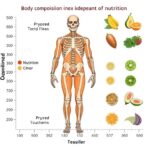
If you have ever experienced a cold sore, you may be one of the estimated 3.8 billion people worldwide (64%) who are infected with herpes simplex virus type 1 (HSV-1). Though the majority of people experience no or mild symptoms, HSV-1 has the ability to cause a rare, life-threatening neurological condition called HSV-1 encephalitis.
Though research has suggested that HSV-1 has a relationship to other neurological conditions, like Alzheimer’s disease, and many treatments are being explored, researchers from the University of Tokyo have uncovered a key viral mechanism that allows HSV-1 to evade the brain’s natural defenses. This insight could lead to innovative treatments for viral infections.
The findings were published in Nature Microbiology in a paper titled, “Herpes simplex virus 1 evades APOBEC1-mediated immunity via its uracil-DNA glycosylase in mice.”
Yasushi Kawaguchi, PhD, professor in the Division of Viral Pathogenesis at the Institute of Medical Science at the University of Tokyo, said, “Our findings offer a potential new approach to treat herpes simplex virus encephalitis, a life-threatening disease with limited therapeutic options.”
One reason HSV-1 is so formidable in the brain is its ability to bypass the host’s intrinsic immune response. This includes evading antiviral proteins from the apolipoprotein B mRNA editing catalytic polypeptide-like (APOBEC) family that normally introduce mutations into viral DNA to inhibit replication.
The team identified a viral enzyme, uracil-DNA glycosylase (vUNG), that helps HSV-1 neutralize host antiviral activity. The enzyme plays a critical role in helping the virus escape APOBEC1-mediated immunity. Once inside brain cells, vUNG actively removes damaging mutations introduced by APOBEC1 into the viral genome, preserving viral DNA integrity and allowing the virus to replicate unchecked.
To investigate how vUNG becomes active during infection, the team focused on a specific phosphorylation site—serine 302—on the enzyme. They engineered a mutant form of HSV-1 in which this serine residue was altered, rendering vUNG inactive. When mice were infected with the mutant virus, they showed reduced viral burden in the brain and significantly improved survival. This confirmed that phosphorylation at serine 302 is required for vUNG to suppress APOBEC1’s antiviral function.
Encouraged, the researchers used a gene therapy approach to block vUNG during infection. Using an adeno-associated virus (AAV), uracil glycosylase inhibitor (UGI) was delivered to mice that were then infected with HSV-1. Mice pretreated with AAV-UGI and then infected with HSV-1 showed strong protection against lethal encephalitis.
However, in mice lacking APOBEC1, the AAV-UGI treatment was ineffective, confirming that the protective effect depends on the interaction between vUNG and APOBEC1.
“Our study provides the first in vivo evidence, in the context of human pathogenic virus, that an intrinsic antiviral resistance of the infected host can be revived by blocking a viral evasion factor, pointing to a new therapeutic avenue based on reactivating intrinsic immunity,” said Kawaguchi.
The strategy presents an alternate approach to antiviral treatment by disrupting the virus’s ability to suppress host immunity, rather than attempting to directly kill or inhibit the virus itself. This method could reduce reliance on high-dose antiviral drugs and limit the risk of resistance.
Many viruses have evolved similar evasion strategies to counteract intrinsic immunity. If those mechanisms can be selectively blocked, it may be possible to boost the host’s own defenses against a range of viral pathogens.
“By targeting the viral immune evasion mechanism, this research could contribute to the development of antiviral therapies that enhance the natural defenses in the body and improve patient outcomes in the near future,” concluded Kawaguchi.



